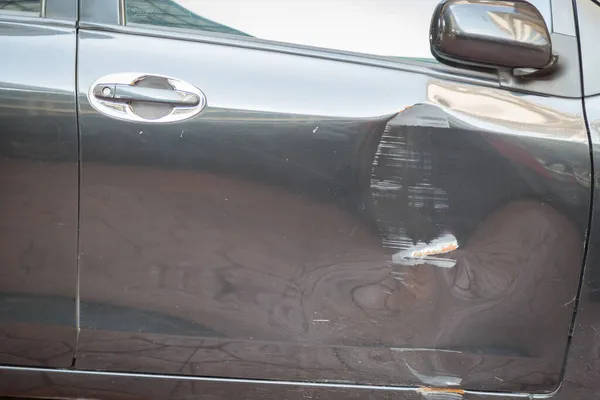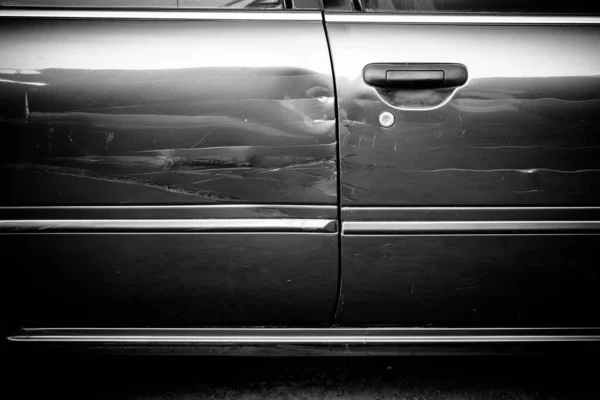The Science Behind Door Ding Repair: How Pros Restore Your Car’s Shine
While door dings might seem minor, they can significantly detract from the visual appeal of a flawless car. The process of repairing these dents is complex and intriguing, involving an understanding of how the metal reacts, the characteristics of the paint, and the use of sophisticated tools and methods. Skilled professionals in door ding repair are equipped with this expertise and cutting-edge technology to rejuvenate your vehicle's look. Let’s explore how these specialists work to restore your car’s original luster.
Understanding the Mechanics of Door Dings
What Causes Door Dings?
Dings on car doors occur from small collisions, like when a nearby car door swings open too far, shopping carts veer off course, or unintentional nudges happen in cramped parking areas. While these slight dents typically don't compromise the vehicle's structural strength, they can detract from its visual attractiveness, particularly if the paint gets scratched.
How Door Dings Affect the Metal
The structure of a car consists of lightweight metal panels, typically crafted from aluminum or steel. These panels are designed to bend when subjected to pressure, but they do not always return to their initial form independently. Upon impact, the force either compresses the metal inward or pushes it outward, leading to dents or bulges. The challenge for repair specialists is to restore the metal's original shape without compromising its integrity or damaging the paint finish.
Paintless Dent Repair (PDR): The Go-To Technique
What Is Paintless Dent Repair?
Paintless Dent Repair, often referred to as PDR, is a unique method used by technicians to carefully restore the metal to its original shape without requiring any paint or filler. This approach is favored for its ability to maintain the original factory finish while also being more economical compared to conventional auto body repair techniques.
The Science Behind PDR
PDR involves adjusting metal on a microscopic scale. Metals possess a property known as memory, allowing them to revert to their initial shape. Professionals in PDR harness this characteristic by applying targeted pressure from within the metal to restore it to its original configuration, utilizing specialized instruments for accurate force application and smooth surface restoration. This technique preserves both the structural strength and the factory paint, which is intricately bonded at a molecular level to the vehicle's exterior, ensuring enhanced durability and visual appeal.
Tools Used in PDR
Professionals utilize a range of specialized tools to perform Paintless Dent Repair (PDR), with each tool tailored for particular dents and entry locations. Some of the frequently used tools are:
- Metal Rods and Picks: These tools are designed to access the space behind the panel, enabling technicians to apply gentle pressure to alleviate dents.
- Glue Pulling Kits: Ideal for accessing difficult spots, these kits adhere to the surface of the dent and gently draw it back into place.
- Light Reflectors and Screens: These reflective instruments assist technicians in detecting surface flaws that may not be visible without assistance, allowing them to pinpoint areas of unevenness for a flawless finish.

When PDR Isn’t Enough: Traditional Dent Repair
When Paint Damage Is Present
Although paintless dent repair (PDR) works well for many small dents, it isn't appropriate for every type of damage. In cases where a dent has resulted in paint chipping or cracking, conventional repair techniques are required to avoid rust and preserve the vehicle's appearance. Initially, the affected area needs to be sanded and smoothed before any additional repairs can take place.
Traditional Dent Repair Steps
- Smoothing and Repairing: The technician begins by sanding the affected area to eliminate the dent. If needed, they apply a filler to create an even surface.
- Preparing and Coating: After the dent has been repaired, the technician applies a primer followed by paint, utilizing sophisticated color-matching methods to achieve an exact match with the vehicle's original hue.
- Finishing Touches: Once the painting is complete, the technician buffs and polishes the area to achieve a smooth, shiny finish.
Factors That Influence Door Ding Repair
Type and Location of the Ding
Various kinds of dents necessitate distinct methods for repair. For example, a shallow, circular dent can be repaired more easily compared to one that is sharp and has creases. Furthermore, dents situated near the edges of a panel present greater difficulties because there is less space to maneuver tools.
Size and Depth of the Dent
The dimensions and severity of a dent influence the repair methods and duration. For larger and deeper dents, a mix of techniques such as metal reshaping and paint touch-ups may be necessary. In contrast, smaller and shallower dents can typically be fixed using just paintless dent repair (PDR).
The Importance of Surface Temperature in Dent Repair

Why Temperature Control Matters
The pliability of metals is greatly influenced by temperature. When exposed to lower temperatures, metals tend to harden and resist deformation. On the other hand, higher temperatures increase their malleability, allowing for easier reshaping.
Using Heat in Door Ding Repair
Skilled technicians frequently utilize heat guns to preheat metal surfaces before making repairs. This method is particularly advantageous in paintless dent repair (PDR), as it helps to prevent the paint from fracturing while removing dents. Nonetheless, excessive heat can harm the paint, so technicians diligently keep an eye on temperature readings to prevent any damage.
Preventing Future Door Dings
Parking Strategies
To reduce the likelihood of getting door dings, steer clear of busy parking lots and consider parking at a slight angle. Whenever you can, opt for spaces at the ends or park farther away from heavily trafficked areas.
Protective Accessories
Installing door protectors or trim guards on your vehicle's sides can help shield it from unintended dents. This is particularly beneficial for larger cars or when parking in tight spots.
The Final Buff: Restoring the Shine
Once the dent has been eliminated, either by paintless dent repair (PDR) or conventional methods, the technician completes the job by buffing and polishing the affected area. This concluding phase enhances the surface with a smooth, glossy finish that conceals any traces of prior damage and integrates the repaired section seamlessly with the vehicle's overall appearance.
The Role of Polishing Compounds
Polishing agents smooth the paint's surface and achieve a consistent luster. These agents possess mild abrasiveness, which aids in eliminating minor scratches or subtle discrepancies in the paint, rendering the repair nearly undetectable to onlookers.
110 E 43rd St, Suite 120
Garden City, Idaho 83714, USA
Phone: (208)-251-5338

